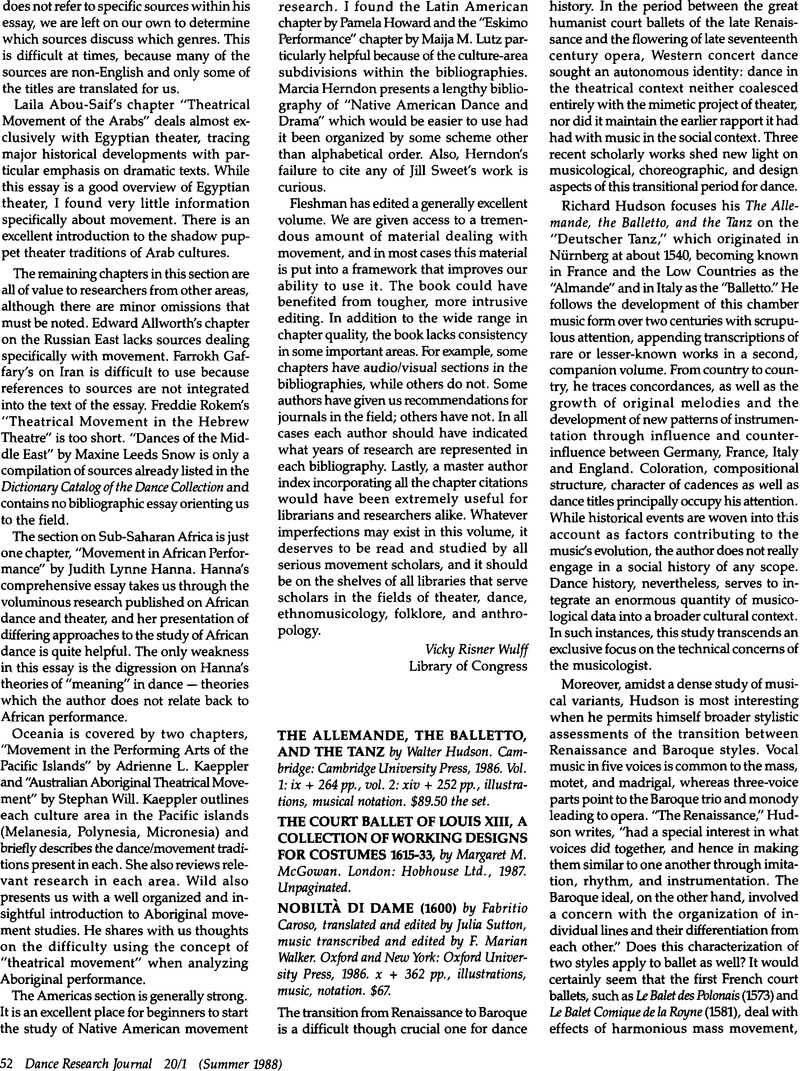No CrossRef data available.
Published online by Cambridge University Press: 22 July 2014

1. Caroso does not engage in the subtle dance aesthetics that characterized the fifteenth-century Italian ballet masters such as Domenico da Piacenza, Antonio Cornazano, and Ebreo da Pesaro. Surprisingly, though, his vocabulary seems far more balletic than anything to be found in Arbeau's Orchesographie (1588). In Caroso we find a version of the “temps de cuisse” and of the “tour en dehors,” as well as a fairly strict fifth position. The authentic illustrations, however, do not reveal much of the dancerly aspect of the dance.
2. The erotic potential is less evident in the drawings than in the libretti, collected by Lacroix, Paul, Ballets et Mascarades de Cour de Henri III a Louis XIV(1581-1652). (Geneva: 1868–1870)Google Scholar. This remarkable collection has recently been republished by Slatkine.